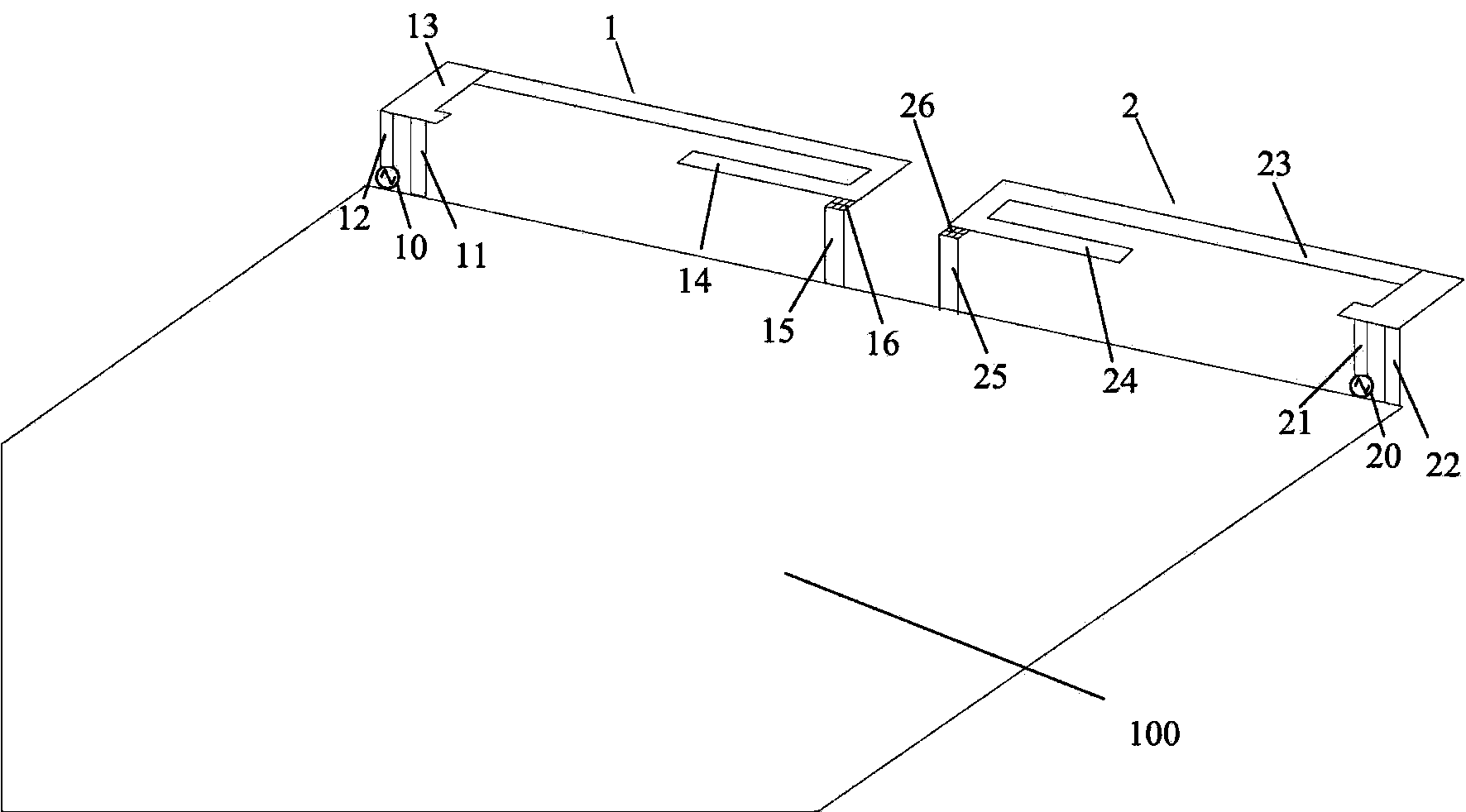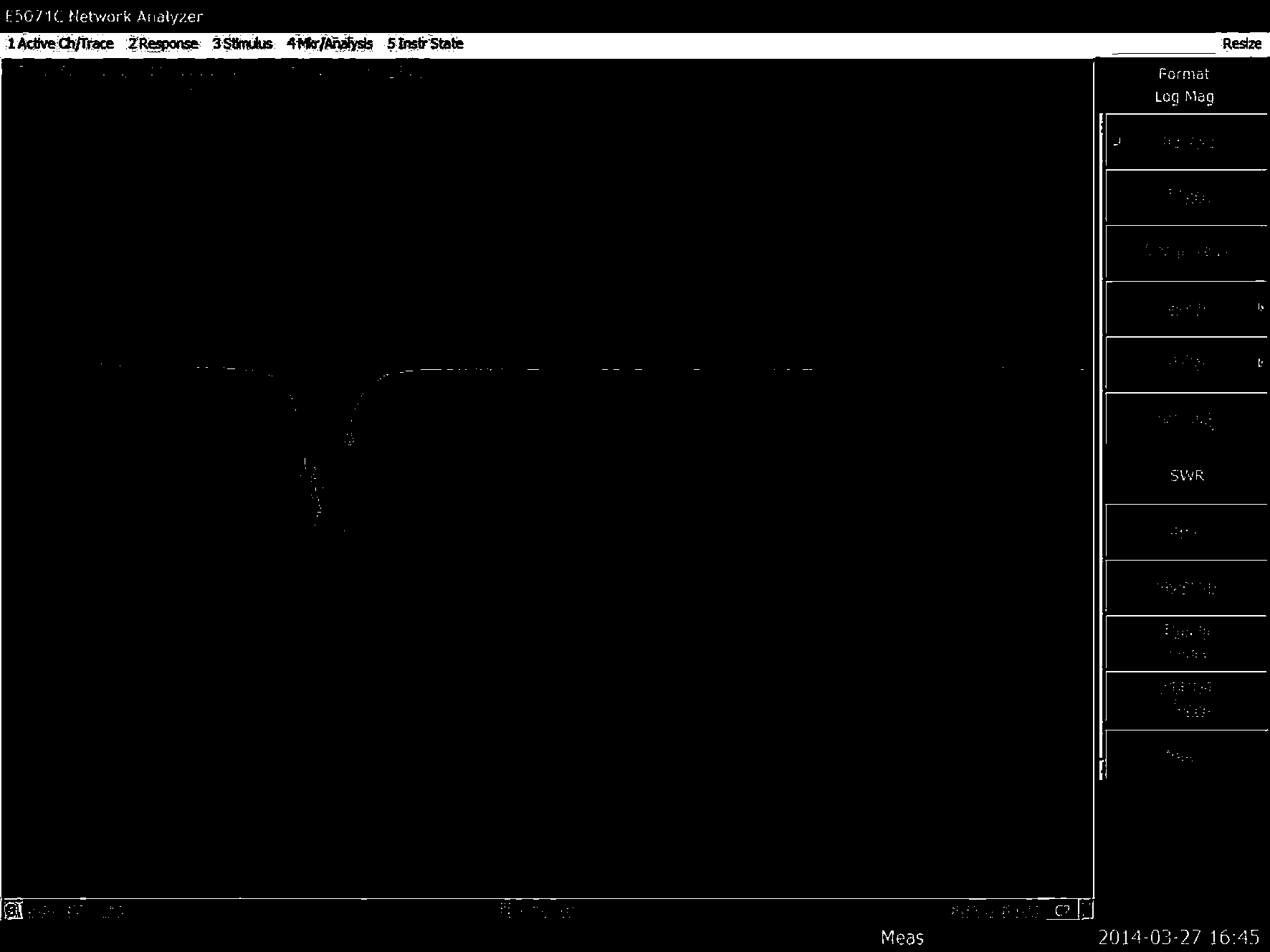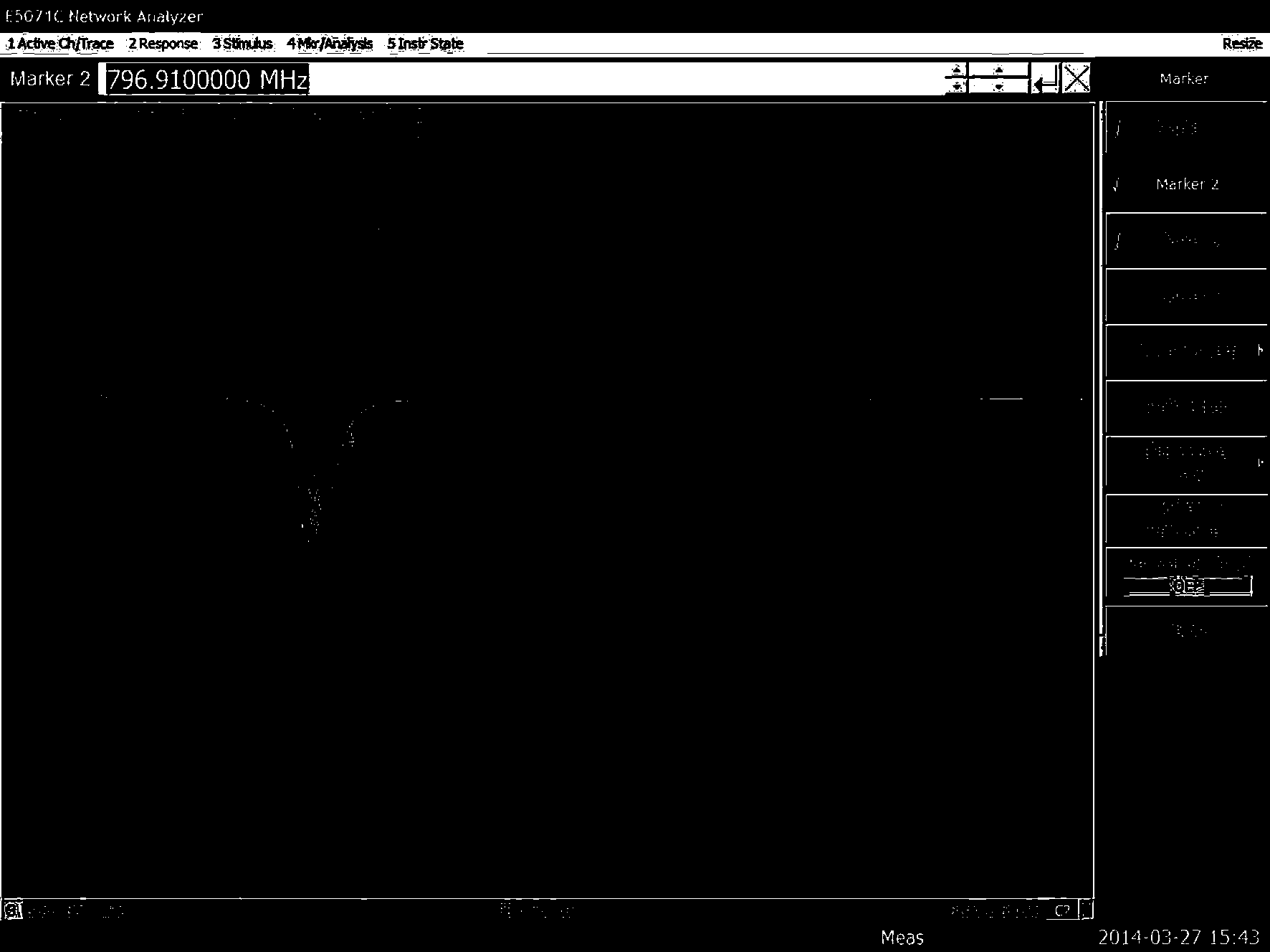Narrow-spacing low-SAR high-isolation MIMO antenna
A narrow spacing, high isolation technology, applied in the field of MIMO antennas with low SAR and high isolation, can solve the problem that the antenna isolation cannot meet the requirements, and achieve the effect of reducing the SAR value and improving the isolation.
- Summary
- Abstract
- Description
- Claims
- Application Information
AI Technical Summary
Problems solved by technology
Method used
Image
Examples
Embodiment 1
[0031] The MIMO antenna described in this embodiment is designed for a wireless access terminal with a size of 140mm*72mm, working in the LTE frequency band, and supporting MIMO technology. The wireless access terminal is required to provide voice service and data transmission service at the same time, but working in the same frequency band inevitably brings about mutual interference between two or more antennas for voice and data transmission services.
[0032] Such as figure 1 As shown, in this embodiment, two three-dimensional PIFA antennas 1 and 2 are used, and one of the two antennas is a main antenna and the other is a diversity antenna. The main and diversity antennas should be arranged on the two edges of the top of the PCB 100 as much as possible to ensure the largest distance between the two antennas. Preferably, the width of the top of the PCB should be greater than a quarter wavelength. The main and diversity antennas may include several resonances, and each reson...
Embodiment 2
[0042] Such as Figure 4 As shown, the difference between this embodiment and Embodiment 1 is that in Embodiment 1, the feeding points of the two antennas are respectively arranged on the left and right edges of the top of the PCB, in a symmetrical distribution form, while in Embodiment 2, the feeding points are respectively arranged On the left edge and center right of the top of the PCB. The feed points of the main and diversity antennas are set at asymmetrical positions to avoid current resonance positions as much as possible. That is, when the main antenna is activated, the feed point of the diversity antenna is located at the weakest position of the excited floor current; when the diversity antenna is activated, the feed point of the main antenna is also located at the weakest position of the excited floor current.
[0043]The terminal capacitive load technology used in this implementation, in addition to still maintaining the effect of changing the floor current and rad...
Embodiment 3
[0051] Such as Figure 6 As shown, the difference between this embodiment and Embodiment 1 is that the main and diversity antennas of this embodiment increase the high-frequency branches 17 and 27 respectively on the basis of Embodiment 1, which are used to increase the high-frequency band for generating communication, and still maintain the low-frequency The load tuning capacitor on the branch is used to improve the isolation of the low frequency band of the antenna.
PUM
 Login to View More
Login to View More Abstract
Description
Claims
Application Information
 Login to View More
Login to View More - R&D
- Intellectual Property
- Life Sciences
- Materials
- Tech Scout
- Unparalleled Data Quality
- Higher Quality Content
- 60% Fewer Hallucinations
Browse by: Latest US Patents, China's latest patents, Technical Efficacy Thesaurus, Application Domain, Technology Topic, Popular Technical Reports.
© 2025 PatSnap. All rights reserved.Legal|Privacy policy|Modern Slavery Act Transparency Statement|Sitemap|About US| Contact US: help@patsnap.com



